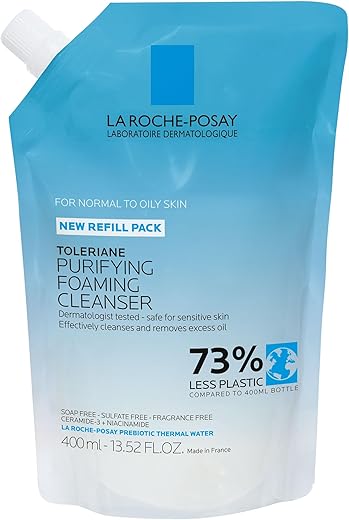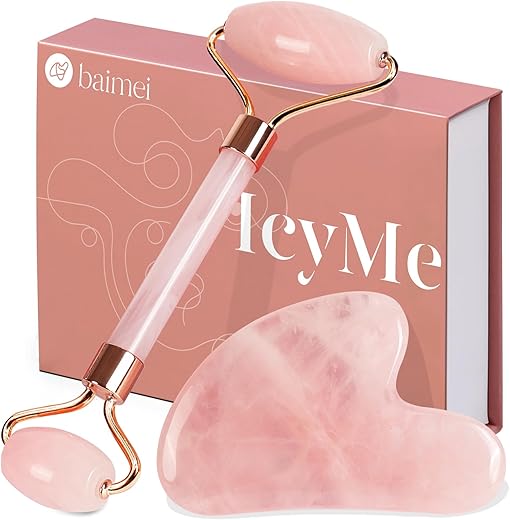
How to Incorporate Face Toner into Your Daily Skincare Routine
This step-by-step guide will show you how to add face toner to your daily skincare routine for a balanced and healthier complexion.
Top-Rated Face Toners



Cleanse your face
To cleanse your face, start by choosing a gentle cleanser that suits your skin type. Wet your face with lukewarm water and then apply a small amount of the cleanser to your fingertips. Gently massage the cleanser onto your face using circular motions, paying extra attention to areas prone to oiliness or breakouts. Be sure to avoid the delicate eye area.
Once you have thoroughly cleansed your face, rinse it off with lukewarm water. Using water that is too hot or too cold can be harsh on the skin. After rinsing, pat your face dry with a clean towel. Avoid rubbing your skin, as this can cause irritation. Instead, gently press the towel against your face to absorb the moisture. Remember to cleanse your face twice a day, once in the morning and once before bed, to maintain a clean and healthy complexion.


Choose the right toner
Select a toner that is suitable for your skin type. To choose the right toner for your skin, start by determining your skin type. If you have oily skin, look for a toner that helps control excess oil and mattifies your complexion. Opt for toners containing ingredients such as witch hazel or tea tree oil, as they are known for their oil-absorbing properties. For dry skin, go for toners that provide hydration and nourishment. Look for toners with ingredients like rosewater or hyaluronic acid, as they help to moisturize and soothe dry skin. If you have sensitive skin, opt for gentle toners that are free of harsh chemicals and fragrances. Look for toners with calming ingredients like chamomile or aloe vera to soothe and protect your sensitive skin. For combination skin, choose a toner that balances both oily and dry areas. Look for toners that offer a combination of oil control and hydration, with ingredients like cucumber or green tea extract.
Look for ingredients like witch hazel, tea tree oil, or rosewater, depending on your specific skincare needs. Once you have determined your skin type, it is important to look for specific ingredients that cater to your skincare needs. If you struggle with acne or oily skin, toners containing witch hazel or tea tree oil can help to control excess oil, minimize pores, and reduce breakouts. These ingredients have astringent properties that help to remove impurities and balance oil production. On the other hand, if you have dry or dull skin, toners with rosewater can provide hydration, soothe irritation, and leave your skin feeling refreshed. Rosewater is known for its moisturizing and antioxidant properties, helping to restore moisture and improve the overall appearance of your skin. Remember to always check the ingredient list and choose toners that are free of alcohol or other ingredients that may irritate or worsen your specific skin concerns.



Apply toner on a cotton pad
Pour a small amount of toner onto a cotton pad. Gently squeeze the bottle or use a dropper to control the amount of toner you pour. A few drops should be sufficient to start with. Make sure the pad is damp but not soaked. To achieve the right level of dampness, press your finger against the pad after pouring the toner. If it feels too wet, lightly squeeze out the excess liquid. This step is crucial as an overly soaked pad can lead to wastage of toner and make it harder to distribute evenly on your face.
For example, let’s say you are using a rosewater toner. Hold the bottle a few inches above the cotton pad and pour three to four drops onto it. Gently press your finger on the pad to check its dampness. If it feels too wet, gently squeeze out the excess liquid until it is slightly damp. Another example would be using a glycolic acid toner. In this case, pour two to three drops of the toner onto the cotton pad and follow the same process of checking its dampness. Adjust the number of drops according to the consistency of your toner and the size of the cotton pad you are using.



Gently swipe the cotton pad on your face
- Start from the center: Begin by placing the cotton pad at the center of your face, specifically on your nose or forehead.
- Swipe gently: Move the cotton pad in gentle upward motions, spreading it towards your hairline or temples.
- Avoid rubbing or pulling: Ensure that you do not rub or pull the cotton pad across your skin, as this can cause irritation or breakouts.
- Pay attention to oil-prone areas: Focus on areas of your face that tend to get oily, such as your T-zone (forehead, nose, and chin). Swipe the cotton pad softly over these areas to remove excess oil.
- Target visible pores: Give extra attention to areas with visible pores, such as your nose and cheeks. Swipe the cotton pad gently over these areas to help minimize their appearance.



Follow with moisturizer
After applying the toner, wait for a minute or two to let it absorb into your skin. This waiting period allows the toner to effectively penetrate your skin and balance its pH levels. Once the toner has been absorbed, take a small amount of your regular moisturizer and apply it to your face and neck using gentle, upward strokes. Spread the moisturizer evenly, making sure to cover all areas of your skin.
For example, if you have dry skin, you can use a moisturizer with ingredients like hyaluronic acid or ceramides to provide intense hydration and restore moisture levels. Gently massage the moisturizer into your skin until it is fully absorbed. If you have oily or acne-prone skin, opt for a lightweight, oil-free moisturizer that won’t clog your pores. Apply a thin layer of the moisturizer to avoid an overly greasy or heavy feeling.
By following this simple guide, you are ensuring that your skin receives the maximum benefits of both the toner and moisturizer. The toner helps to restore your skin’s pH balance and prepare it for the moisturizer, while the moisturizer locks in the hydration and provides further protection. Remember to be patient and allow each product to absorb into your skin before moving on to the next step. Your skin will thank you for the extra care and attention!



Achieving Clear and Radiant Skin
To summarize, adding face toner to your daily skincare routine is a small but impactful step that can significantly improve the health and appearance of your skin. The benefits it brings, including pH balance, impurity removal, and enhanced product absorption, make it a valuable addition to any skincare regimen. By incorporating this simple step into your routine, you can achieve a healthier and more radiant complexion.
Necessary Items






Skincare Must-Haves
Using Toner Effectively: A Guide
Step-by-step guide to using Face Toner
- Cleanse your face: Start by washing your face with a gentle cleanser to remove any dirt, oil, or makeup. Pat dry with a clean towel
- Apply toner: Pour a small amount of toner onto a cotton pad or ball. Gently swipe the pad across your face, focusing on areas that are prone to oiliness or congestion, such as the forehead, nose, and chin. Avoid the eye area
- Let it absorb: Allow the toner to fully absorb into your skin. This usually takes a minute or two. Avoid rinsing it off
- Follow with moisturizer: Once the toner has absorbed, apply your regular moisturizer to lock in hydration and protect your skin. This step is important as toners can sometimes be drying, so moisturizing ensures that your skin stays balanced
- Use twice a day: For best results, incorporate toner into your skincare routine both in the morning and evening. Consistency is key to seeing the benefits of using a toner regularly
Frequently Asked Questions about Face Toner
What is face toner and what does it do for the skin?
Face toner is a skincare product that is used after cleansing the face and before applying moisturizer. It is primarily used to balance the pH level of the skin and remove any remaining impurities or residue from the cleanser.
Toner typically contains a water-based solution that may include ingredients such as antioxidants, humectants, and plant extracts. These ingredients can help hydrate the skin, tighten the pores, and provide a refreshing sensation.
In addition to balancing the skin’s pH, toner can also help to restore the skin’s natural barrier, improve the absorption of other skincare products, and promote a smoother and more even complexion. It can be particularly beneficial for individuals with oily or acne-prone skin, as it can help control excess oil production and minimize the appearance of blemishes.
Overall, face toner is a useful step in a skincare routine as it can contribute to healthier, more radiant skin by providing hydration, refining the pores, and preparing the skin for subsequent skincare products.

Hey, I’m Ava Wilson—a skincare enthusiast and a certified esthetician. I’m dedicated to sharing my knowledge and empowering others to achieve healthy, glowing skin through simple, effective routines and natural remedies. Join me on this exciting skincare journey, and let’s unlock your skin’s potential for a confident, beautiful you.





